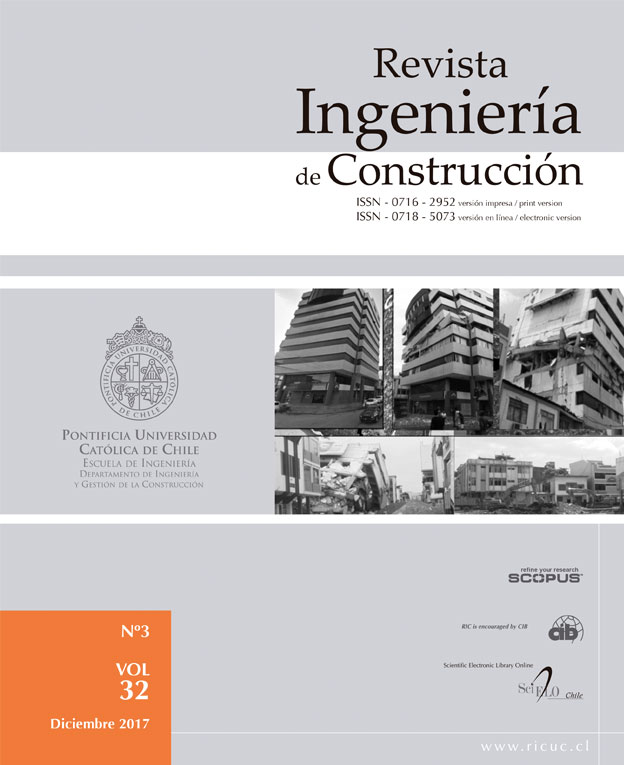Bending and compression characterization of hollow structural elements made of recycled Tetra Pak®-Based Boards (RTPBB) and an approximated calculation of the carbon footprint involved in their production
Keywords:
TetraPak based boards, hollow structural elements, mechanical properties of plywood, carbon footprint, eco-materialsAbstract
The present research summarizes the test results of mechanical capacity of built-up structural elements, intending to introduce the possibility of using RTPBB as material for creating structural solutions for temporary housing, and for small houses. Hollow columns and beams models helped in understanding theoretical behavior by using nonlinear stress-strain relations of the material, and finite element models (FEM) to determine the areas where stresses and deformations are principal. Optimum thickness boards of about 15mm helped to build the specimens, which afterwards were failed using and MTS testing machine, following monotonic loads. Tests performed, mainly focused on compression and bending, using hinged supports and a central two-points-loading arrangement respectively. Additionally the research presents a basic comparison of mechanical results to those reported by technical manuals of commercial plywood in Colombia. In a parallel analysis, a functional unit defined, helped in the estimation of the carbon dioxide footprint equivalent for various steps of the production processes of the base material. Results show that although the RTPBB has a low elastic behavior, stresses remain below the ultimate stress. Column failure tends to be brittle compared to that failure for the bending resistant elements. However, the presence of local buckling suggests also the means needed to improve said capacity. Failure loads are similar to those reported for commercial plywood in Colombia, however, experiencing larger deformations. The carbon footprint was determined to be reduced about 20% (production of the material used in this research), compared to commercial plywood material in Colombia.

